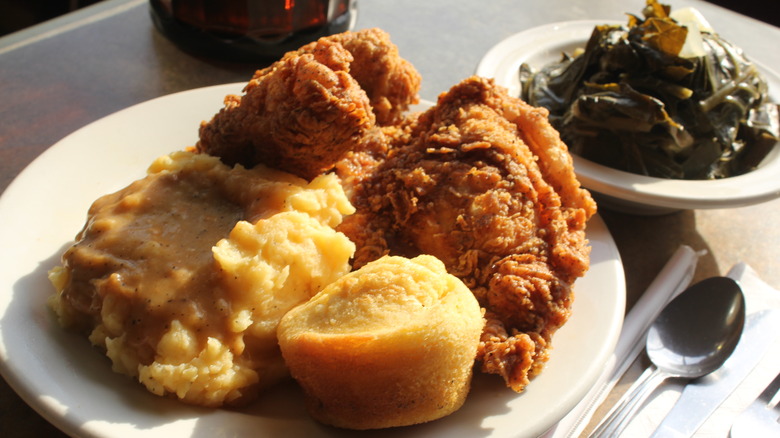The Undeniable Influence African Cuisine Has On Soul Food
Soul food is the category of cuisine developed by African-Americans who lived in the southern United States during the American colonial period up to the Civil War. This category of food includes many flavorful and comforting dishes like macaroni and cheese, collard greens, cornbread, and shrimp and grits. Today, many people can enjoy soul food, as America gradually began to embrace the culinary masterpieces that resulted first out of necessity, and now out of comfort and tradition.
Soul food's origins saw dishes prepared with lots of different seasonings and salt for flavor and preservation of meats such as pork. We continue to expand upon the recipes that are a staple piece of southern culinary history. We know that today, soul food is available across the U.S., but its origins began even beyond its inception in the south. It begins with the ancestral Africans who were brought to America and carried with them the will to survive.
African roots in traditional soul food
The colonial period is a dark time in America's history, but one that cannot be ignored. The early 17th Century brought with it slavery. Enslaved Africans living in the southern United States adapted the culinary techniques of their homeland to fit the ingredients they had on hand, such as shrimp and corn. Soul food's birth can be attributed to a combination of historical African dishes and the climate in which slaves had access to food, according to the African American Registry. Out of that combination, new dishes were created out of necessity.
While enslaved Black cooks often had to make do with what they had, such as "leftover" cuts of meat that included the intestinal base of chitlins or pig's feet. There are also some ingredients in soul food dishes that possess African origins. Okra originates from what is now modern day Ethiopia, and can be found fried or in other soul food dishes, such as gumbo as a thickener. Another ingredient that is native to Africa is the black eyed pea, which is used in the soul food dish known as Hoppin' John.

